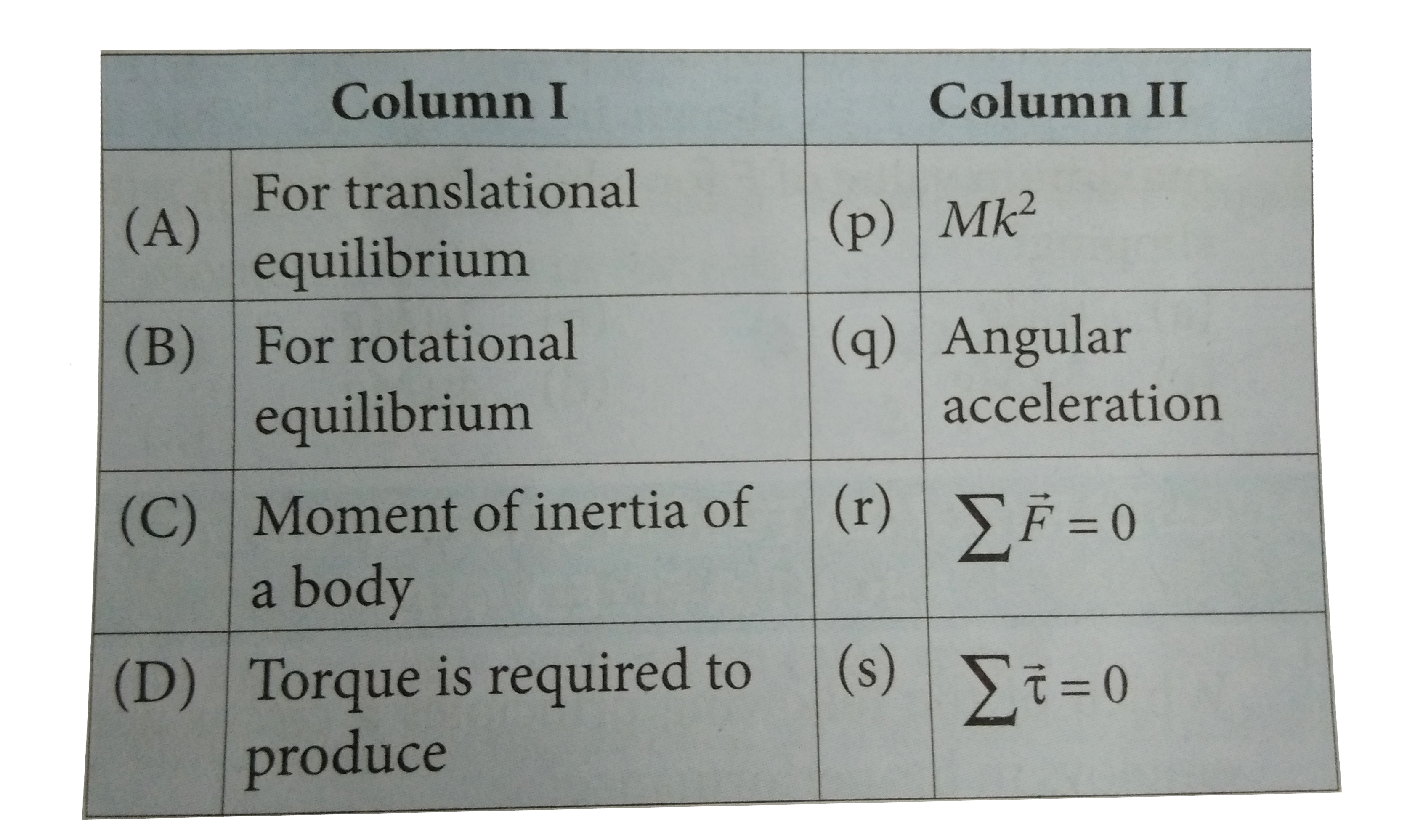Match the column A with B and rewrite correct pairs
A BI. Mycoherbicidesa) CactoblastisII. Bacterial herbicidesb) AlternariaIII. Insects as herbicidesc) Xanthomonas
To solve the matching question, we need to pair the items in Column A with the correct items in Column B based on their descriptions.
1. Identify Mycoherbicides:
- Mycoherbicides are herbicides derived from fungi that specifically target certain plants.
- From Column B, we look for a fungus-related organism.
- The organism Alternaria is a fungus that can act as a mycoherbicide.
- Match: I. Mycoherbicides → b) Alternaria
2. Identify Bacterial Herbicides:
- Bacterial herbicides are derived from bacteria that can control plant diseases.
- The organism Xanthomonas is a type of bacteria known for causing diseases in plants.
- Match: II. Bacterial herbicides → c) Xanthomonas
3. Identify Insects as Herbicides:
- Insects can also be used as biological control agents against certain plants.
- The organism Cactoblastis is an insect that targets prickly pear cacti, making it an insect-based herbicide.
- Match: III. Insects as herbicides → a) Cactoblastis
Final Matches:
- I. Mycoherbicides → b) Alternaria
- II. Bacterial herbicides → c) Xanthomonas
- III. Insects as herbicides → a) Cactoblastis
Correct Pairs:
- (I, b)
- (II, c)
- (III, a)
---
- Mycoherbicides are herbicides derived from fungi that specifically target certain plants.
- From Column B, we look for a fungus-related organism.
- The organism Alternaria is a fungus that can act as a mycoherbicide.
- Match: I. Mycoherbicides → b) Alternaria
- Bacterial herbicides are derived from bacteria that can control plant diseases.
- The organism Xanthomonas is a type of bacteria known for causing diseases in plants.
- Match: II. Bacterial herbicides → c) Xanthomonas
- Insects can also be used as biological control agents against certain plants.
- The organism Cactoblastis is an insect that targets prickly pear cacti, making it an insect-based herbicide.
- Match: III. Insects as herbicides → a) Cactoblastis
- I. Mycoherbicides → b) Alternaria
- II. Bacterial herbicides → c) Xanthomonas
- III. Insects as herbicides → a) Cactoblastis
- (I, b)
- (II, c)
- (III, a)
Topper's Solved these Questions
- QUESTION BANK 2021BOOK - NAVNEET PUBLICATION - MAHARASHTRA BOARDCHAPTER - QUESTION BANK 2021EXERCISE - CHAPTER 11 (4 marks)
3 Videos
- QUESTION BANK 2021BOOK - NAVNEET PUBLICATION - MAHARASHTRA BOARDCHAPTER - QUESTION BANK 2021EXERCISE - CHAPTER 12 (MCQ)
10 Videos
- QUESTION BANK 2021BOOK - NAVNEET PUBLICATION - MAHARASHTRA BOARDCHAPTER - QUESTION BANK 2021EXERCISE - CHAPTER 11 (2 marks)
7 Videos
- MULTIPLE CHOICE QUESTIONS BOOK - NAVNEET PUBLICATION - MAHARASHTRA BOARDCHAPTER - MULTIPLE CHOICE QUESTIONS EXERCISE - Organisms and Environment -II
18 Videos
- SHORT ANSWER QUESTIONS -I BOOK - NAVNEET PUBLICATION - MAHARASHTRA BOARDCHAPTER - SHORT ANSWER QUESTIONS -I EXERCISE - Chapter 19 : Organisms and Environment - II
7 Videos
Similar Questions
Match the column A with B and rewrite correct pairs.
A Bi. Atlas 66a) vit Aii. Riceb) vit Ciii. Spinachc) proteiniv. bitter gourdd) Iron
View SolutionMatch the column A with B and rewrite correct pairs.
A Ba)Penicillium roquefortiii)Alcoholb)Lactobacillus bulgaricus.ii)Cheesec)Lactobacillus acidophilusiii)Yoghurtd)Saccharomyces cerevisiaeiv)curd
View Solution
Knowledge Check
Match the Column I and Column II.,B
 AA-p, B-q, C-r, D-sBA-q, B-r, C-s. D-pCA-r, B-q, C-p, D-pDA-r, B-s, C-p, D-q
AA-p, B-q, C-r, D-sBA-q, B-r, C-s. D-pCA-r, B-q, C-p, D-pDA-r, B-s, C-p, D-qMatch the Column I with Column II -
Column I Column III. Endothermic animalsA. Angler fishII. Ectothermal animalsB. MammalsIII. Organisms of benthonic zoneC. Amphibia, reptilesAIIIIIIABCBIIIIIICBACIIIIIIBCADIIIIIIACBMatch items in column I and column II and choose the correct option :
Column IColumn IIA. UVi) BiomagnificationB. Biodegradable Organic matterii) EutrophicationC. DDT Iiii) Snow blindnessD. Phosphatesiv) BOD
The correct match isAA−ii,B−i,C−iv,D−iiiBA−iii,B−ii,C−iv,D−iCA−iii,B−iv,C−i,D−iiDA−iii,B−i,C−iv,D−i
Match the column A with B and rewrite correct pairs.
A Bi. Symbiotic N2 fixing bacteriaa) VAMii. Free-living N2 fixing bacteriab) Rhizobiumiii. Phosphate solubilizerc) Nostociv. Endomycorrhizaed) Microccocus
View SolutionMatch the Column-I with Column-II.
If a,b,c, are whole numbers, then

View SolutionMatch the items given in column I with those in column II and select the correct option given below.
Column IColumn IIA. Eutrophication(i) UV-B radiationB. Sanitary landfill(ii) DeforestationC. Snow blindness(iii) Nutrient enrichmentD. Jhum cultivationiv Waste disposal
View SolutionMatch the list items in Column I and Column II and select the correct match
Column IColumn II(I) Dodo(A) Rauwolfia(II) Reserpine(B) Mauritius (III) Botanical( C) Khasi and gardens Jaintia hills(IV) Sacred forests(D) Ex-situconservation
View SolutionMatch the Column I with Column II and select the correct answer using the codes given below columns.

A, B and C in the given table are
View Solution
